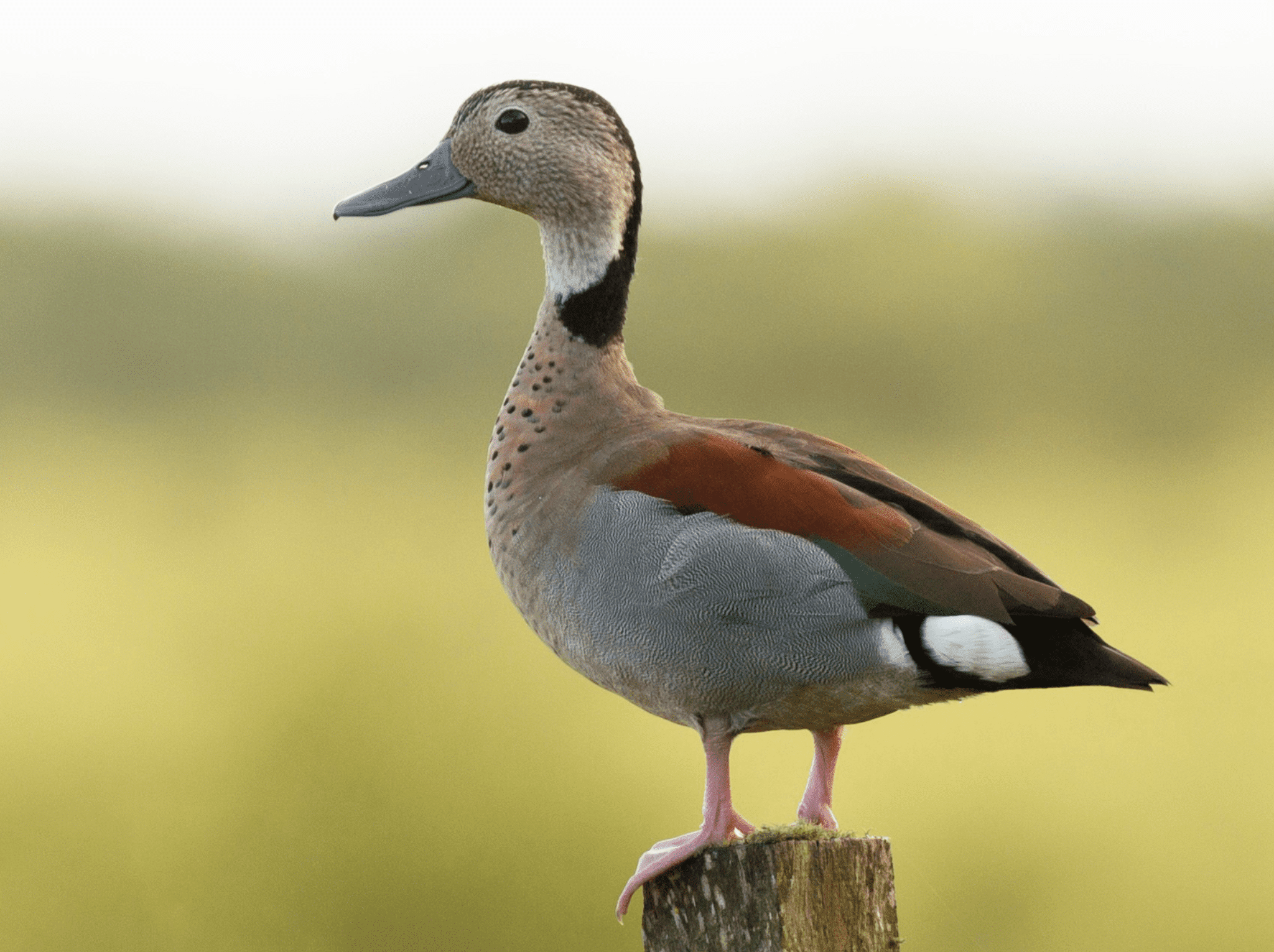The drake has a rich chestnut back, light grey sides, and salmon-coloured breasts with black spots. A black band stretches from the top of the head to the nape of the neck. Females have an olive-brown back with a spotted and white striped head, with a fringed pale breasts and belly. Both have a dark tail, a contrasting pale bottom, and a distinctive white patch on the wing. The beaks are grey, and the legs and feet are pink in both sexes.
The female sits alone on the eggs.
Their habitats include tropical, swampy forests and marshy clearings in well-wooded lowlands, as well as secluded lakes and small streams.
They form strong pair bonds that can last a season or a lifetime. The male courts the female. Mating occurs mostly in water. In the nest, which is most often located in the cavity of a tree, the female sits on the eggs, while the male guards the female. Hatched ducklings are independent – they have a layer of down feathers, they can walk, feed themselves…
Ducklings quickly learn from their parents how to forage for food, swim efficiently, and avoid predators.
They have toes with long pointed claws that specialise in allowing birds to perch on tree branches. These specialised toes are unique because most waterfowl cannot just stay perched on a branch.
The male often stays with the separated, slower ducklings when raising the young.
A bonded pair is often able to produce two groups of offspring in one breeding season. While the male is still caring for the ducklings from the first laying, the female can incubate the second laying, which makes their reproduction much more efficient. By the end of the breeding season, it is possible for a bonded pair to lay and hatch up to 24 ducklings.


